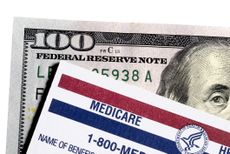Roth 401(k) Contribution Limits for 2024
The Roth 401(k) contribution limit for 2024 is increasing, and workers who are 50 and older can save even more.

A Roth 401(k) is a good option for workers who have access to one through their employer and expect to be in a higher tax bracket when they retire. As an added bonus, the contribution limit for 2024 has increased.
2024 Roth 401(k) contribution limits
The maximum amount you can contribute to a Roth 401(k) for 2024 is $23,000 if you're younger than age 50. This is an extra $500 over 2023.
If you're age 50 and older, you can add an extra $7,500 per year in "catch-up" contributions, bringing the total amount to $30,500. Contributions generally need to be made by the end of the calendar year.

Sign up for Kiplinger’s Free E-Newsletters
Profit and prosper with the best of expert advice on investing, taxes, retirement, personal finance and more - straight to your e-mail.
Profit and prosper with the best of expert advice - straight to your e-mail.
In 2023, the maximum amount you could contribute to a Roth 401(k) was $22,500 for those younger than age 50, and and additional $7,500 in catch-up contributions, raising your employee contribution limit to $30,000, for those age 50 and older.
The Roth 401(k) first became available in 2006, and many companies now offer this option to workers. The Roth 401(k), as the name implies, combines features of the tax-friendly Roth IRA and the traditional 401(k).
A Roth 401(k) vs. a Roth IRA and a traditional 401(k)
As with a Roth IRA, you make after-tax contributions to a Roth 401(k). This won't lower your tax bill now, but it will provide you with income in retirement that is free from taxes. You can make withdrawals from a Roth 401(k) tax-free, and without incurring a 10% early-withdrawal penalty, once you've turned age 59 1/2 and have had the account open for at least five years. (If you retire after holding a Roth 401(k) for only two years, for example, the money must sit for three more years to be fully tax-free, even if you own an older Roth 401(k) account from a previous employer that meets the five-year test).
And as with a traditional 401(k), there are no income limitations with the Roth 401(k), making it an attractive option for high-earners whose salaries might disqualify them from contributing to a Roth IRA.
You can also sock away thousands of dollars more each year with a Roth 401(k) or a traditional 401(k) than you can with an IRA alone.
The annual contribution limit for a Roth IRA for those under 50 is $7,000 for 2024, with an additional $1,000 catch up contribution if you're age 50 or older. You'll be obligated to take required minimum distributions from a traditional 401(k) and a Roth 401(k) once you reach age 72. However, you can avoid RMDs from a Roth 401(k) by rolling over the money into a Roth IRA, which doesn't require minimum distributions.
How much should you save in a Roth 401(k)?
Many employers match employees' 401(k) contributions up to a certain percentage of salary. Note that any employer contributions to a Roth 401(k) will be made pretax and will grow tax-deferred alongside your own Roth contributions. When you withdraw money, you will owe income tax on the employer match.
Experts recommend that workers save at least 15% of their income for retirement, including the employer match. For example, if your employer contributes, say, 2%, then you would need to save an additional 13%.
If you are currently saving below the recommended 15% annually, increase your contribution every year until you reach that goal. For instance, if you are contributing 5% this year, boost that to 7% next year and so on until you reach 15%.
Is a Roth 401(k) right for you?
Roth 401(k) plans can be beneficial to workers who don't expect their tax bracket to decrease during their retirement. This may include younger employees who anticipate their income increases as they age. If a worker’s earnings increase dramatically and their tax bracket is higher than it will be in retirement, then it could make sense to switch to pretax deferrals in a regular 401(k).
(Note: If you invest in both a Roth 401(k) and a traditional 401(k), the total amount of money you can contribute to both plans can't exceed the annual maximum for your age. If you do exceed it, the IRS might hit you with a 6% excessive-contribution penalty).
Roth 401(k) retirement savings tips
Advice for maximizing your Roth 401(k) account:
- Max out your contributions. For each year that you're able, aim to hit the $23,000 limit.
- Once you turn 50, add another $7,500 to that limit annually while you continue to work.
- If your employer offers to match your contributions up to a certain amount, be sure to invest at least that much in your Roth 401(k) each month. It's free money, after all.
Related Content
Get Kiplinger Today newsletter — free
Profit and prosper with the best of Kiplinger's advice on investing, taxes, retirement, personal finance and much more. Delivered daily. Enter your email in the box and click Sign Me Up.
Jackie Stewart is the senior retirement editor for Kiplinger.com and the senior editor for Kiplinger's Retirement Report.
- Erin BendigPersonal Finance Writer
-
 Nvidia Stock Is Joining the Dow. Is It Time to Buy?
Nvidia Stock Is Joining the Dow. Is It Time to Buy?Nvidia will replace Intel in the Dow Jones Industrial Average this Friday. What does it mean for the stock?
By Dan Burrows Published
-
 Tesla Stock Extends Losing Streak Ahead of Election Day
Tesla Stock Extends Losing Streak Ahead of Election DayTesla stock is headed toward its sixth straight loss Monday and Wall Street is staying on the sidelines. Here's why.
By Joey Solitro Published
-
 Is It Too Late to Do a Roth Conversion if You're Retired?
Is It Too Late to Do a Roth Conversion if You're Retired?The short answer is: Not at all. Roth conversions can be great tax-saving strategies … for the right people. Are you a good candidate?
By Arrin Wray Published
-
 Five Options for Retirees Who No Longer Need Life Insurance
Five Options for Retirees Who No Longer Need Life InsuranceIf you're retired and you've checked with your financial planner that life insurance is no longer vital, here are five ways you can turn it to your advantage.
By Evan T. Beach, CFP®, AWMA® Published
-
 Medicare Drug Plans Are Getting Better Next Year. Some Will Also Cost More.
Medicare Drug Plans Are Getting Better Next Year. Some Will Also Cost More.Upcoming changes to the Part D drug benefit, including a $2,000 cap on out-of-pocket medication, will benefit millions of Americans. But higher premiums may also be on the way
By Susan Jaffe | KFF Health News Published
-
 Five Financial Planning Secrets of Millionaires
Five Financial Planning Secrets of MillionairesYou might be surprised: Most millionaires don't feel rich. Instead, they have smart goals, discipline and a little help along the way.
By Kevin Dwyer, CFP®, CLU® Published
-
 Here's Why You Shouldn't Put All Your Money Into Roth IRAs
Here's Why You Shouldn't Put All Your Money Into Roth IRAsConverting a tax-deferred account to a Roth can be a good strategy for lowering future taxes, but moving all of your money at once is typically not recommended.
By Joe F. Schmitz Jr., CFP®, ChFC® Published
-
 Three Advantages of These Underrated Accounts for Retirees
Three Advantages of These Underrated Accounts for RetireesUsing taxable accounts for some retirement savings in the 10 years before and after retirement can give you greater flexibility and benefit your heirs.
By Evan T. Beach, CFP®, AWMA® Published
-
 Are Election Jitters Shaking Up Your Investing Strategy?
Are Election Jitters Shaking Up Your Investing Strategy?Many investors are retreating to safer investments until after the election, but doing so could result in missed opportunities. Here's what to do instead.
By Matthew Sommer, Ph.D. CFA® Published
-
 Don't Wait to Lock In High Estate and Gift Tax Exemptions
Don't Wait to Lock In High Estate and Gift Tax ExemptionsOne of the most sweeping changes to U.S. tax code in modern history could be on the horizon. Now is the time to maximize the legacy you leave your loved ones.
By Ralph W. Stockemer Published